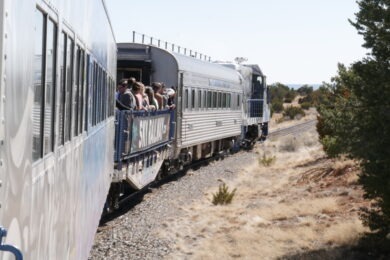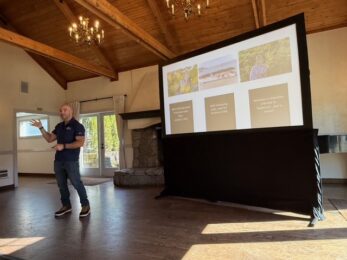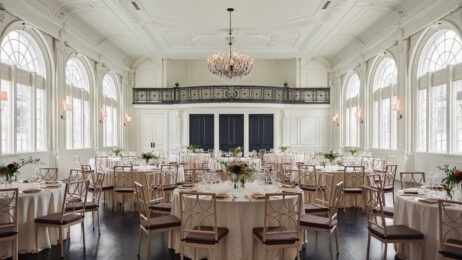Name: Gianna Cardinale Gaudini
Title: Global Head of Events, SoftBank Vision Fund
- Author, The Art of Event Planning: Pro Tips from an Industry Insider
- Certified Interior Designer
- Certified Court Master Sommelier
Did you grow up expecting to be an event professional?
I had a lot of passion for bringing people together because my Italian family has always traveled and loved throwing big parties, and I had wonderful memories from that. I wanted to create powerful experiences for others. I actually thought I would be a doctor, and majored in psychology, which turned out to be very helpful in this industry because so much is dependent on interpersonal skills and building emotional connections.
I landed on an event career because it blended my analytical, creative and social skills. That led me to a marketing event-specialist career, driving brand building and revenue generation for companies.
How did you figure out you could get paid for planning events?
I read a book about how to get a job that required completing a series of questions. Becoming a meeting planner was one of the suggested results. I set up informational interviews with anyone I could find in the industry. That led to my first job in San Francisco, at a destination management company. My future manager at Google worked there and later recruited me. She is still my mentor.
What secrets have you learned for making events memorable?
People’s left brains shut down after a certain amount of data is processed, and that includes during PowerPoint presentations. Storytelling can ignite the right side of the brain by creating emotional responses. You don’t typically want to make people sad, but making them feel appreciated, inspired or happy will help them remember the messaging you are sharing.
Brands are constantly competing to cut through the noise; personalizing the experience and making it relevant can help it stand out in their minds. It doesn’t have to be elaborate or expensive. Personalized badges or thoughtful food and beverage experiences go a long way. As long as you are showing that, as a brand, you care about each attendee deeply, you can achieve relevance at any scale.
Approaching meetings from a design-first perspective is fun, but if content and messaging are thin and there is no substance, your event will fall flat.
What is an example of how you have personalized an event?
We let people pick their own badge backdrop and used the themes as an icebreaker exercise. Food is one of the basic needs, so asking for preferences in advance and delivering on that puts people in the right frame of mind to be receptive to content.
When I have a product launch, I take care of my press by providing them with a nice room with great Wi-Fi, internet plug-ins, greenery, an espresso machine and healthy food options, so they can write a great story.
How do you create the dream event team to make all that happen?
Events are not planned in a vacuum or a silo. They are built on trust and skill. I start by aligning roles and responsibilities and focusing on communication. My job as executive producer is to make sure everyone is in the loop on event strategy. Everyone is part of the team. I don’t like to use the term vendor. They are partners. We all need each other. We are all reliant on each other.
I try to hire people who are aligned with the values of my brand. They have to care about diversity, inclusion and sustainability and have diverse teams and sustainability practices in place.
What is one thing meeting professionals could do differently that would make them more successful?
Don’t get bogged down in the execution of the event. Stretch those strategic muscles, take a step back, ask the higher-level questions and think bigger picture.
At Google, my small team produced 600 events a year. As we matured, we realized we had to start scaling back to be effective. We focused on just the most complex and strategic, high-profile events and empowered others to take on the more straight-forward events.
How do you determine if you are successful?
That is the million-dollar question. Start upfront. I determine our objectives and key results (OKRs) and intentions desired. Is it brand-building? Then you might establish a benchmark for social-media mentions, web traffic or media coverage. If you are trying to drive sales revenue, the benchmarks might be around leads, prospects or product. Education prospects could be around demos given.
Surveys are helpful because they help with Net Promoter Score to see how the brand is doing compared to others in the industry. The anecdotal responses are like gold, and they can influence where you spend budget the next time around.
I like to ask my stakeholders, “If a headline was written about this event, what would it be?” That can get to the crux of what you are trying to achieve—and what success looks like.




